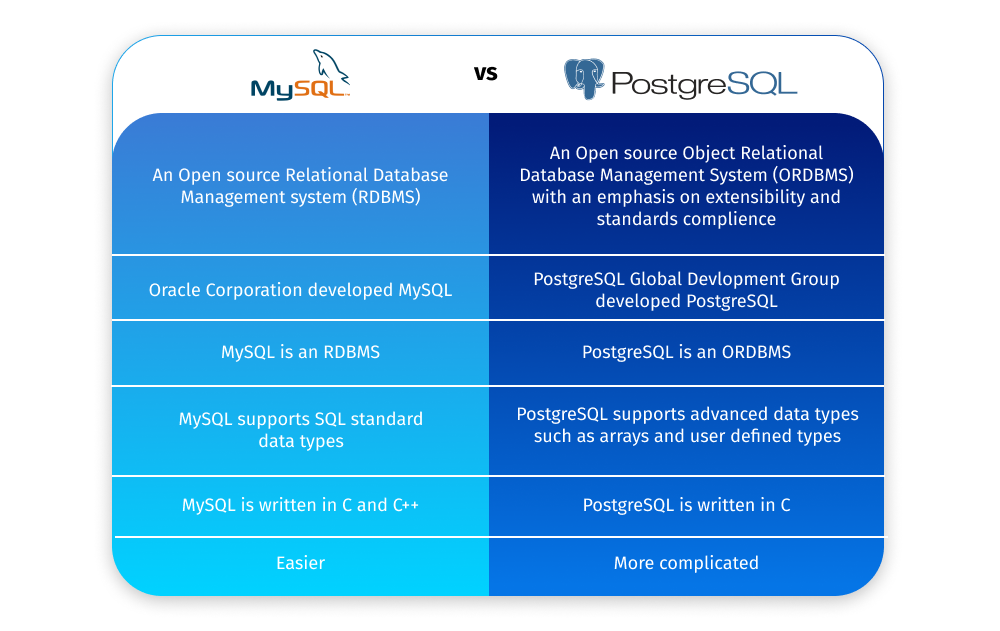

MySQL supports full-text and partial text indexing and includes four types of indexes: Indexes help businesses find a specific customer by their first and last name, as if they were using a phone book. Indexes are optional structures that copy data from tables, and help logically arrange that data.įor example, in a customer table, indexes usually arrange data using first_name and last_name criteria. Finding a specific entry can be difficult and time-consuming, since database servers then need to examine every row and column in a table. Indexes are especially valuable for businesses that store large amounts of data, because tables aren’t sorted by default. Using indexes in a database management system helps increase the speed at which a query is performed. PostgreSQL doesn’t support either, but it does include the COALESECE function that returns the first argument that is null. MySQL doesn’t support any of the above, but it does support IFNULL and ISNULL functions.
#POSTGRESQL VS MYSQL SYNTAX FULL#
PostgreSQL supports complex SQLs such as INTERSECT, FULL OUTER JOINS and EXCEPT. That’s because MySQL isn’t fully SQL-compliant, while PostgreSQL is. MySQL doesn’t support all SQL features, as PostgreSQL does. Here’s an example of what a query in both database management systems looks like: SELECT * FROM customers Since the two platforms are SQL-based, they have a lot in common in terms of syntax. PostgreSQL and MySQL rely on Structured Query Language (SQL), which is a standard language used to store and manipulate data in a database management system. It’s possible to work in both RDMS with:īut PostgreSQL has a slight advantage over MySQL, because it supports more procedural languages, such as: PostgreSQL and MySQL both support a wide variety of computer languages. We will compare the database systems across the following key touchpoints based on Sept 2022 versions: Both PostgreSQL and MySQL provide insights into all data, but knowing their differences is crucial for choosing the right database management system. When data points connect and establish relationships across several table forms, users can search across multiple tables by entering a single query. Since data typically exists across several tables, users rely on shared data points to connect tables. PostgreSQL and MySQL are open-source relational database systems that allow users to create, modify and delete data. MySQL comparison, we analyze crucial differences between the two database management systems to discover how they work and when to use them. For all of their similarities, PostgreSQL and MySQL differ from one another in many ways. Both RDMS enable businesses to organize and interlink large amounts of data, allowing for effective data management. PostgreSQL and MySQL are among the most popular open-source relational database management systems (RDMS) worldwide.


 0 kommentar(er)
0 kommentar(er)
